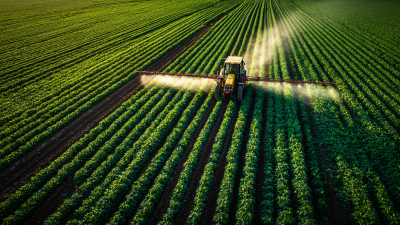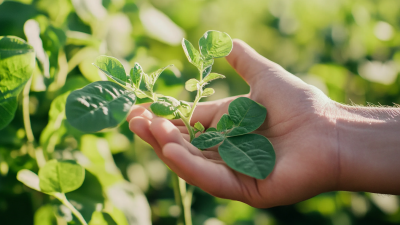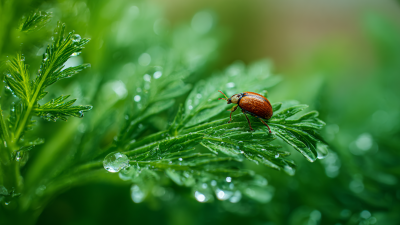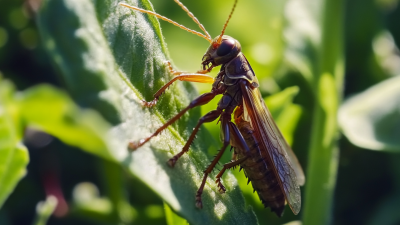 0551-68500918
0551-68500918 





In today’s farming world, pesticides play such a vital role in helping farmers get the best possible crop yields and keep our food safe to eat. Did you know that, according to the Food and Agriculture Organization (FAO), pests and diseases can cause up to 40% of crop losses everywhere? That really puts into perspective how important it is to manage pests effectively. At Innovation Meiland (Hefei) Co., LTD., they’re all about pushing the boundaries with new Pesticide Research and developing smarter formulations. They totally get that using pesticides responsibly isn’t just about boosting productivity but also about safeguarding our health and the environment. Thanks to the latest innovations—like targeted application methods and advanced chemical mixes—they’re helping farmers get better results without compromising safety for people or ecosystems. In this blog, we’ll dive into some practical strategies for using pesticides wisely—getting the job done while keeping safety in check for everyone involved.
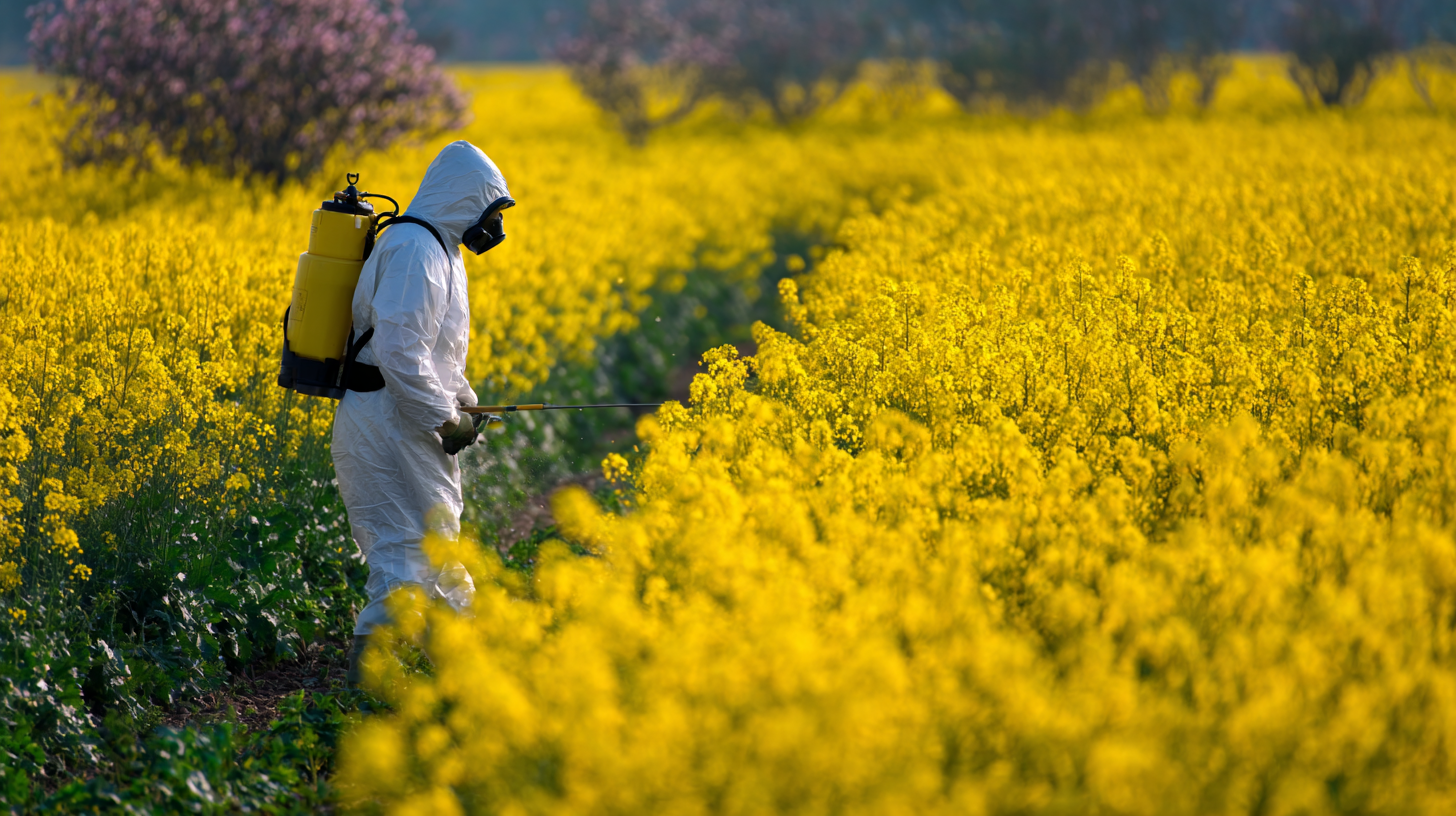
Getting a good grip on how pesticides fit into agriculture is pretty important if you're serious about protecting your crops and getting the best possible harvest. The FAO, for example, points out that pests and diseases can cause up to 40% of crop losses worldwide—that’s a huge chunk! So, it really highlights why having smart pest control strategies is such a big deal. Pesticides are a key tool here—they help shield crops from these threats so farmers can grow food more efficiently, and in a way that’s sustainable. When used wisely, they can really boost productivity and help make sure everyone has enough to eat.
Oh, and a quick tip—always follow the guidelines from your local regulatory agencies when Applying Pesticides. Things like timing and application techniques are super important. For instance, applying pesticides early in the morning or late in the evening tends to reduce environmental impact while still doing a good job on pests.
Also, it’s a smart move to combine pesticide use with something called Integrated Pest Management, or IPM for short. This approach mixes biological controls, certain cultural practices, and careful chemical use to make farming more sustainable in the long run. In fact, farms using IPM have been able to cut pesticide use by about 30% without losing any yields—that’s pretty impressive.
Another tip—make sure to rotate different types of pesticides. This helps prevent pests from developing resistance, keeping the chemicals effective and supporting a healthier environment overall.
| Pesticide Type | Target Pest | Application Method | Optimal Timing | Safety Precautions |
|---|---|---|---|---|
| Insecticide | Aphids | Spray | Early Morning | Wear protective clothing |
| Herbicide | Weeds | Broadcast | Post-emergence | Avoid wind drift |
| Fungicide | Powdery Mildew | Foliar Spray | Before Symptoms Appear | Do not eat treated crops |
| Rodenticide | Rodents | Bait Station | Throughout Growing Season | Keep away from pets |
When you're choosing the right pesticide for your crops, it’s pretty important to really understand what your plants actually need. These days, thanks to breakthroughs in precision farming—like using deep learning techniques—we’ve gotten a lot better at processing all those tricky data sets. That means, as farmers, we can make smarter decisions about how to use pesticides so they really hit the pests without messing up the crops or risking safety. Plus, studies show that bringing machine learning into our farming practices can help us predict yields more accurately, which means we can apply pesticides more efficiently and, ultimately, get more out of our fields.
On top of that, there's been a lot of buzz lately about fungal-based biopesticides. People see them as a greener, more sustainable option compared to traditional chemicals. Not only do these bioproducts help get rid of pests, but they also boost soil health, making our farms more resilient overall. It’s pretty clear that using biopesticides can help increase crop yields while cutting down on chemical use—so, safer food and better for the planet. As these eco-friendly options become more popular, it’s definitely worth thinking about your specific crop needs and the local environment when deciding on pest control methods. It’s all about balancing effective pest management with long-term sustainability, right?
Making sure pesticides are used effectively and safely is super important if we want to get the best crop yields without putting people or the environment at unnecessary risk. Just recently, some research in Kuwait showed that many farmers there lack proper knowledge about pesticide safety, which really highlights the need for better training and education. The survey results revealed that a lot of farmers don’t really know the right ways to handle pesticides or use protective gear, so there’s definitely a big push for more comprehensive training programs focused on safe and responsible pesticide use.
Looking at farming practices overall, the banana industry is a classic example of how heavily farmers rely on pesticides to control pests and diseases. While it's often necessary, overusing pesticides can cause serious concerns—not just about food safety, but also environmental pollution. Take India, for instance—when pesticides are applied pretty randomly or excessively, it can lead to dangerous residue levels on fruits, posing health risks to people and harming ecosystems. To tackle these issues, experts are developing integrated pest management (IPM) strategies. These focus on choosing and applying pesticides wisely, combined with sustainable farming techniques suited to local conditions. When done right, these approaches can boost crop yields while also protecting people and the planet at the same time.
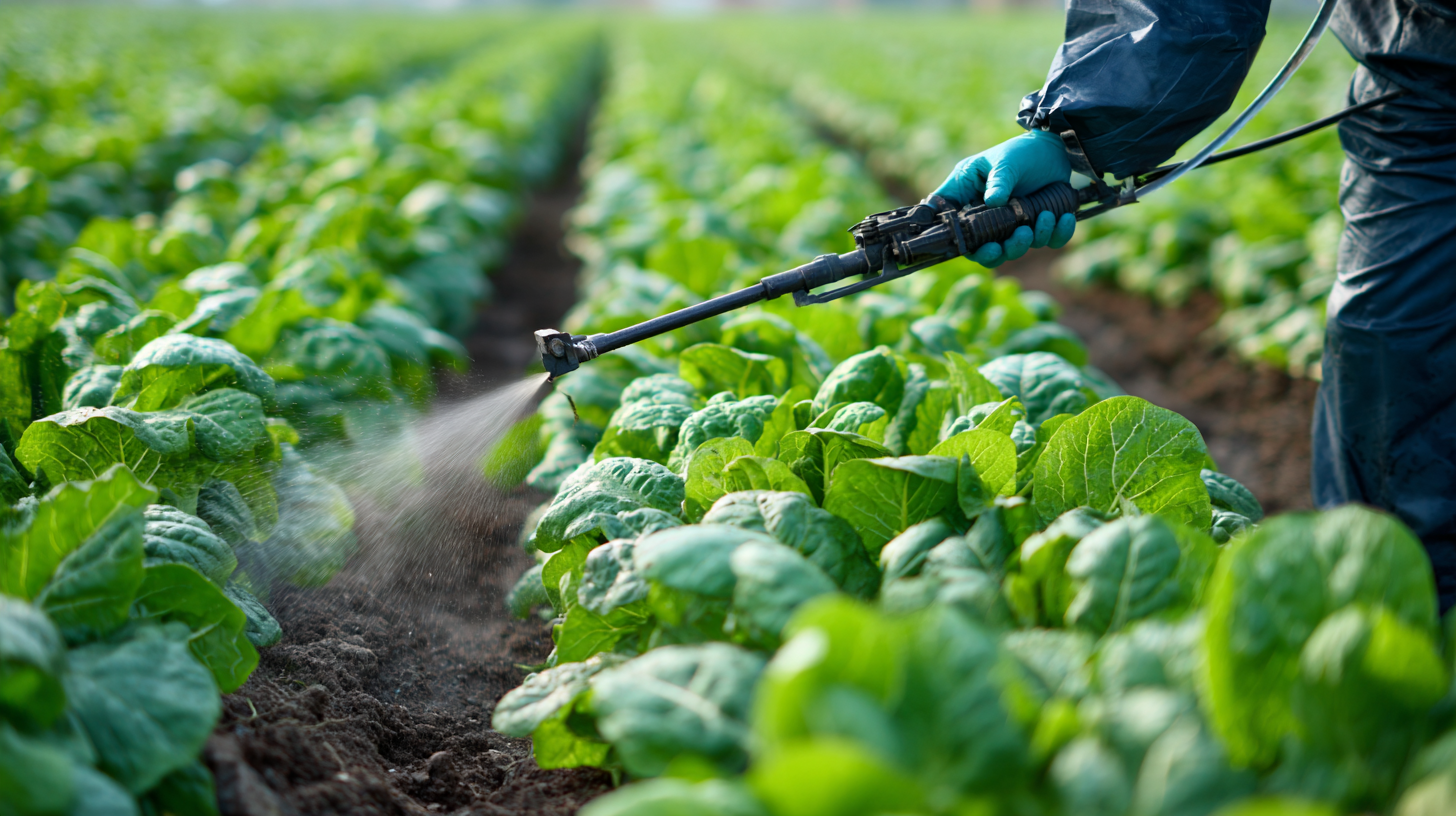 Keeping a close eye on your crops and really understanding how pesticides affect them can make a huge difference, not just for the yield but also for safety. Honestly, consistent observation is the name of the game. Using tech tools like drones or satellite images can give you real-time updates on how your plants are doing, helping you decide exactly when and how much pesticide to apply. Being proactive like this means your crops get what they need right when they need it—cutting down waste and boosting efficiency.
Keeping a close eye on your crops and really understanding how pesticides affect them can make a huge difference, not just for the yield but also for safety. Honestly, consistent observation is the name of the game. Using tech tools like drones or satellite images can give you real-time updates on how your plants are doing, helping you decide exactly when and how much pesticide to apply. Being proactive like this means your crops get what they need right when they need it—cutting down waste and boosting efficiency.
So, a few tips—regularly check your plants for telltale signs like discoloration or drooping leaves. Catching problems early means you can use pesticides more judiciously, which saves you money and reduces overuse. Oh, and don’t forget about soil health—testing it can spot nutrient issues that might affect how plants absorb pesticides and how resilient they are.
And here’s the deal: understanding the real impact pesticides have on your crops is key. Run some field trials with different application methods and timing to see what works best. Plus, think about integrated pest management—combining natural controls with chemicals—to keep pests at bay without overdoing it.
A couple more bits—keep detailed records of what pesticides you use and how your crops respond. Over time, this info can really help fine-tune your approach. And don’t skip on staying up-to-date—going to workshops or browsing through agricultural resources will totally empower you to keep both safety and productivity high.
Finding the right balance between pest control and environmental safety is a big deal for farmers. That’s why integrating sustainable pest management strategies with pesticide use is so important if you want to boost your crop yields without wreaking havoc on the environment. One approach that's really gaining traction is called integrated pest management, or IPM for short. Basically, it’s a smart combo of using natural predators, changing up the habitat a bit, and planting resistant crop varieties—all paired with careful pesticide use. Farmers can use pest monitoring tools to figure out the best times to spray, which means fewer chemicals are used unnecessarily. This not only helps protect helpful insects and other creatures, but also keeps the ecosystem healthier overall.
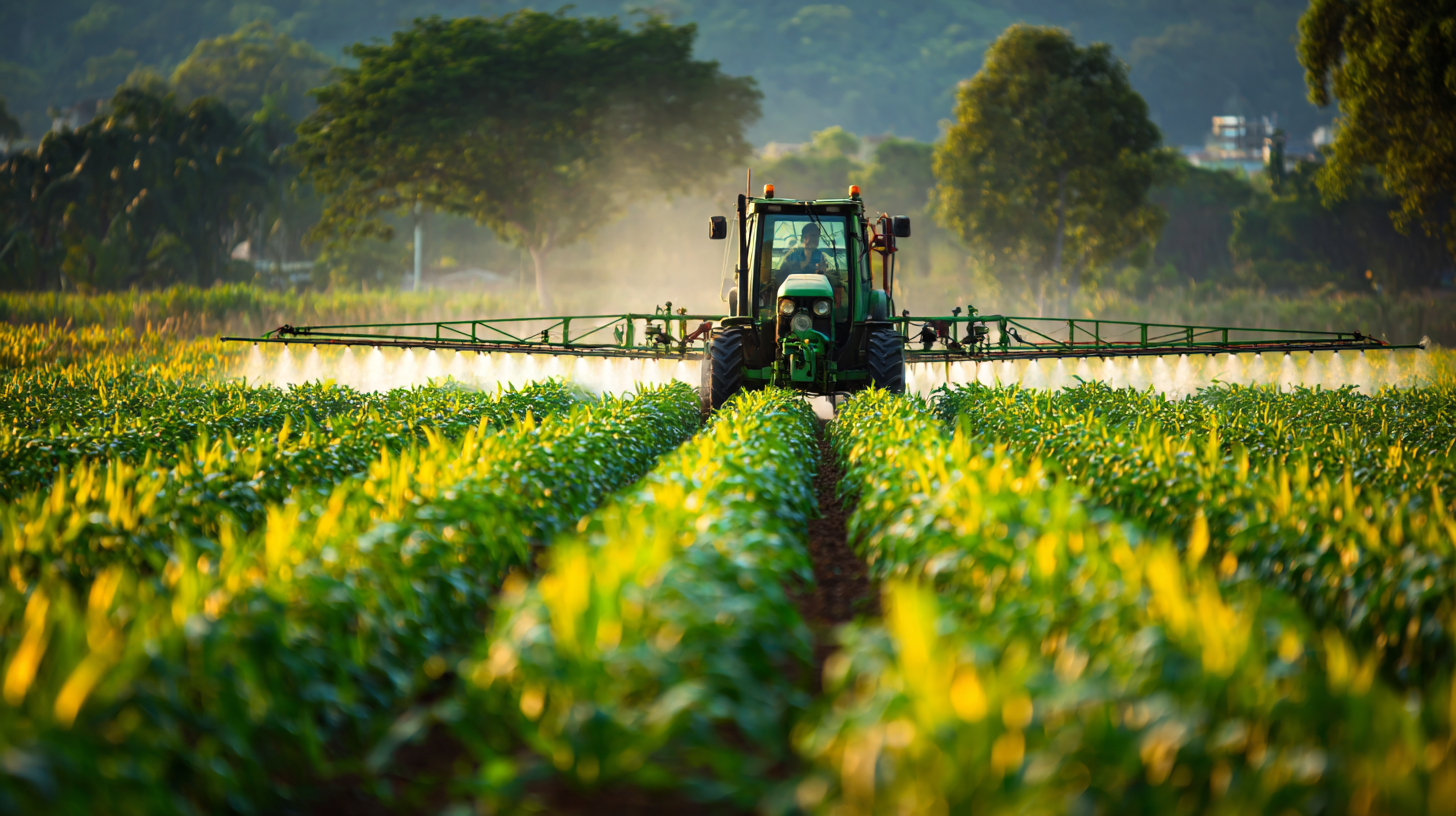
And let’s not forget about choosing the right pesticides. It’s super important to go for targeted products that specifically tackle the pests bothering your particular crop. It’s a more precise way of fighting pests, which means fewer accidental strikes on non-target critters and a better shot at maintaining ecological balance. Plus, rotating pesticides with different modes of action is a smart move—it helps prevent pests from becoming resistant and keeps your yields high without harming the environment in the long run. When farmers combine IPM practices with responsible pesticide use, they can enjoy a productive, safe, and sustainable farm. It’s all about working smarter, not harder, and being mindful of the bigger picture.
When it comes to boosting crop yields without compromising safety, sticking to pesticide regulations is a must. Farmers and agri-professionals really need to keep up with how rules around pesticide use are constantly changing. Following these laws isn’t just about avoiding trouble — it actually helps protect our environment and public health, and it also makes sure the pesticides work better. You can do this by keeping good records, getting proper training for application techniques, and staying updated on both local and national rules.
At Innovation Meiland (Hefei) Co., LTD., we totally get how important it is to balance innovationwith compliance. Our focus on creating new Pesticide Formulations isn’t just about being innovative — it’s also about ensuringsafer farming practices. By investing in R&D right here in Hefei, China, we’re dedicated to delivering effective solutions that meet all regulatory standards, helping farmers get those better yields without sacrificing safety. Ultimately, emphasizing both safety and productivity is key for building a sustainable future in agriculture.
: Integrated pest management (IPM) is a strategy that combines biological control, habitat manipulation, and resistant crop varieties with judicious pesticide application to maximize crop yields and ensure environmental safety.
Pest monitoring techniques enable farmers to identify the optimal times to apply pesticides, which helps reduce unnecessary chemical usage and minimizes adverse effects on beneficial insects and non-target organisms.
Choosing targeted pesticides that specifically address the pests affecting a particular crop can reduce off-target effects, enhance effectiveness, and promote ecological balance.
Rotating pesticides with different modes of action can help prevent pests from developing resistance, thus sustaining both crop yields and environmental health over time.
Compliance with pesticide regulations protects the environment and public health while enhancing the effectiveness of pesticide use, ensuring sustainable agricultural practices.
Careful record-keeping is essential for staying informed about legal regulations, which can improve compliance and overall safety in pesticide application.
Innovation Meiland focuses on research and development of new pesticide products that meet regulatory standards, emphasizing both safety and productivity for sustainable agriculture.
Proper application techniques are critical for minimizing risks associated with pesticide use and ensuring that pesticides are applied effectively and safely.
Regular updates from local and national authorities, along with training on application techniques, can help farmers remain informed about the evolving regulations surrounding pesticide use.
The overall goal is to achieve productive, safe, and sustainable agricultural practices that maximize crop yields while protecting the environment.
In our blog titled "How to Effectively Use Pesticides for the Best Crops and Keep Everyone Safe," we dive into just how important pesticides are in farming — especially when it comes to protecting your crops. Figuring out how to pick the right pesticide for your specific plants and growing conditions isn’t just a good idea, it’s kinda essential if you want the best yield without messing up safety-wise. We also talk about the best ways to apply them — stuff like timing and technique — because doing it wrong can be risky for both people and the environment.
On top of that, keeping an eye on how your crops are doing and how pesticides are affecting them is super helpful. It lets you tweak your approach to get better results. Mixing up traditional pesticide use with more sustainable pest management strategies isn’t just good for your crops, it also keeps you on the right side of regulations. Here at Meiland Stock, we’re all about coming up with new pesticides and formulations, showing our commitment to making farming safer, more efficient, and more innovative.


